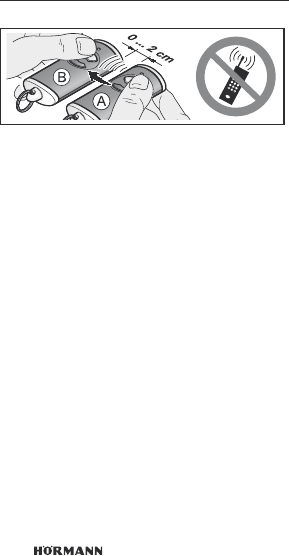-
Bij de overdracht van het signaal vanaf een hse2 type naar een hse4 type knipperd de Hse4 rood / blauw, wat is de fout? Gesteld op 3-3-2020 om 12:25
Reageer op deze vraag Misbruik melden -
Ben door een fout de code van Hormandeur kwijt.Hoe herstel ik die weer? Gesteld op 6-1-2016 om 11:20
Reageer op deze vraag Misbruik melden-
Via een andere handzender kun je die overzetten op de handzender waarvan je de code kwijt zijt of via de motor staat normaal gezien ook een knop waaruit je een code kunt verzenden z'n dan opnemen via de handzender. Best de handleiding raadplegen van dit toestel hoe je dit het beste kunt doen. Geantwoord op 6-1-2016 om 11:59
Waardeer dit antwoord (1) Misbruik melden
-
-
Ik heb een ecomatic deur bediening waarvan de afstand bediening verloren is gegaan met een auto ongeluk. Ik heb nu een nieuwe hse2 afstand bediening (met grijze knopjes had de oude ook) hoe stel ik deze in op de bediening van de deur? Ik kan de code dus niet overnemen van de oude afstand bediening Gesteld op 2-10-2015 om 09:48
Reageer op deze vraag Misbruik melden-
Ik dacht dat op iedere poortopener een knop staat waardoor je een signaal uitzend die je kunt opnemen met de handzender. Helaas is dit voor iedere motor iets anders. Beste de handleiding surfen van de poortopener Geantwoord op 2-10-2015 om 12:35
Waardeer dit antwoord (4) Misbruik melden
-




















































































